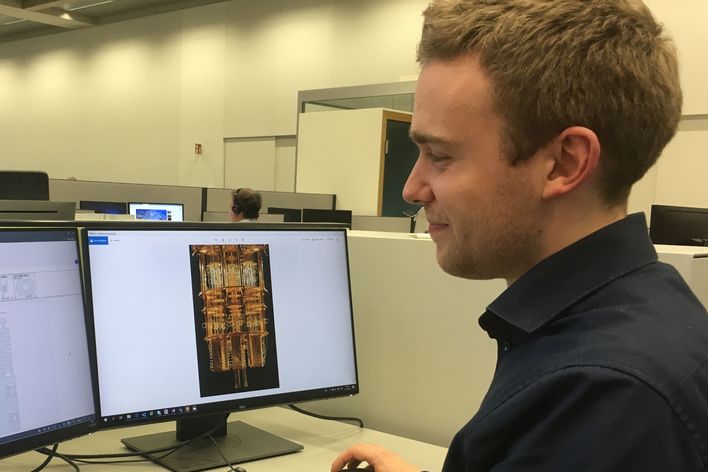Mr Förtsch, when will I be able to write WhatsApp messages using thought waves?
I would say that’s still some way off! But the good news is that we’ve already taken the first steps.
By that you mean your light sources for quantum technology?
Exactly. They’re set to be a real game changer.
In what sense?
In the future, we will be able to control physical quanta, such as photons, to a degree that was previously impossible. That’s essential for making any kind of beneficial use of quantum phenomena.
Let’s start at the beginning: what is quantum technology?
Quanta are everywhere, but the way they behave is something the human mind struggles to grasp. For example, in quantum mechanics it’s possible for something to exist simultaneously in two mutually exclusive states or occupy two different positions at the same time. I know that sounds ridiculously confusing! It’s best to simply accept how tough that is to imagine and focus on the possibilities it offers. Quantum technology can help us make use of the kind of quantum phenomena that we are simply not conscious of in our daily lives. Of course, applications based on quantum technology are not really anything new. Just think of semiconductor-based circuits in microprocessors, for example, or indeed lasers. But right now we’re crossing the threshold of 21st-century quantum technology.
What does that mean exactly?
It all comes down to control – our ability to control individual quanta. They carry specific information encoded within them, for example on their intrinsic angular momentum, or ‘spin’. In order to read this information and use it for calculations and other purposes, we have to make it visible, in other words amplify it to some degree. To do that, we use photons. But not just any old photons! Depending on what you are trying to measure, these ‘amplifier photons’ require certain properties, for example a precisely defined wavelength or polarization. So that means I need a way of telling my light source to give me photons with this precisely defined wavelength or very specific polarization.

And your light sources can do that?
Absolutely. And not after 20 attempts in some kind of controlled lab setting, but on a reliable, industry-ready basis.
How did you reach this stage?
We fire the beam of a tiny diode laser through an arrangement of optical elements that form it into exactly the type of beam we need. And then we perform what we call the ‘quantum trick’, but I hope you understand that’s something we want to keep secret! One of the keys to our light sources is to make them with as few optical components as possible, because we hope to make them even smaller in the future. Right now, they are slightly bigger than a paper clip. But our goal is to shrink them even further, because that’s one of the keys to success in many applications. That presents us with some major challenges in terms of design and connection technology, but we’re confident that we have greater strengths in those areas than anyone else.
What applications will your light sources be suitable for?
The range of potential applications is almost endless. Our task is to equip the quantum engineers of this world with the technology they will need in the future. Our light sources will play a part in all sorts of areas, from novel sensor systems for medicine and autonomous driving to new types of data encryption, new microscopes and pieces of equipment that we can’t even imagine yet!
Including an interface to control things with our thoughts?
Well, we’re just the enabler. But yes, even that is conceivable. Quantum technology will enable us to read human brain waves with an extremely high resolution. But to create a thought interface we would still have to learn to interpret them.
So we need to be patient?
For now, yes. But it’s good to have something to look forward to!





